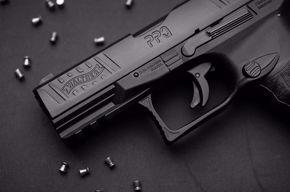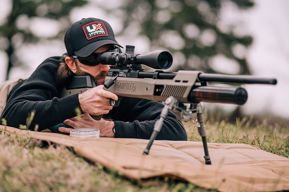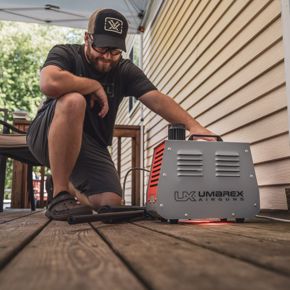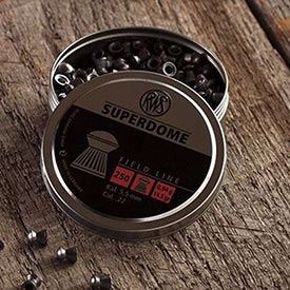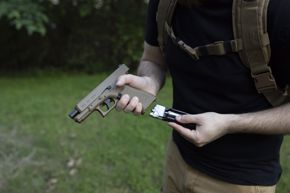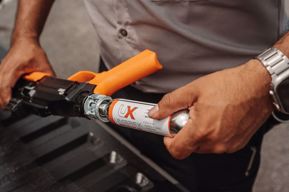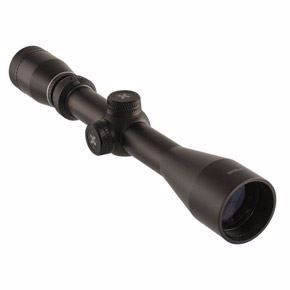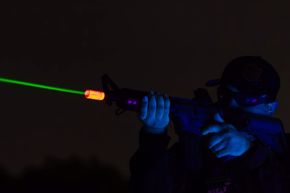In this last installment of this series we will look at some hot features found on some optics these days such as Illumination, built in Range Finders, and main Tube Size. While this series has not been exhaustive in optics related information, we do hope it has helped shed some light on the field of shooting optics.
Illumination, Range Finders, and Zero Stops
This last installment deals with some other features found on some optics that may or may not be useful to you in your pursuits. Going in the order they are written above the first topic will be reticle illumination.
Illumination is a feature that has found its way into more and more optics. In short, illumination just makes the reticle easier to see in challenging light situations. Is illumination essential? For most shooters, no. Is it nice to have? Yes. In the event you need to take a shot with light fading, having a slight glow on the reticle is very handy.
Recently, Vortex Optics won a military contract for their Next Generation Squad Weapon– Fire Control– a 1-8X30 “computer” optic. This optic incorporates technology that figures atmospheric data, laser rangefinding capabilities, ballistic calculators, visible and infrared aiming lasers, and wireless connectivity, among other features.
If this sounds impressive, it should. This optic is set to cost the taxpayers nearly $11,000 each. While we civilians can’t get our paws on this yet, there are other optics on the market that do have some of the features like laser rangefinding and ballistics calculators built in. Do you really need this capability? If you are hunting out west and shooting several hundred yards, then it is a definite maybe. Being able to range an animal without taking your eye out of the scope might just make the difference between filling your tag or not.
A zero stop is simply a mechanical way that allows the scope’s elevation turret to be adjusted back to its set zero when additional elevation correction is dialed into the turret. This feature is useful for shooters who will be shooting at various extended distances, but need to reliably return the scope to its native 100 or 200 yard zero.
If you are shooting a firearm inside of 300 yards, this might be a feature that you never use. However, if you go beyond that range or are airgunning, this is certainly a feature that might be of interest to you.
Focal Plane and Tube Size
The last two features in this treatise on rifle scopes are focal plane and main tube size. There are two ways the reticle can appear inside of an optic, most commonly, in the second focal plane, and, more recently and with increasing frequency, first focal plane. What this means is that a second focal plane scope allows the reticle to remain constant in relation to the magnification of the scope. A first focal plane scope's reticle changes in relation to the magnification of the lenses.
A second focal plane reticle can be used to range a target, but it will need to be done at certain magnification settings. Only one setting will provide an instant and accurate range of the target. A little math will be needed at other magnification settings. The nice thing about SFP type scopes is that you really don’t need to range a target at lower magnification settings and within a few hundred yards. The reticle will appear at just the right size at any magnification setting.
The first focal plane reticle allows ranging to be done at any magnification setting. This sounds wonderful on the surface, but in practice the reticle subtensions are very small at lower magnification settings. In the FFP scopes I have used, I would describe the reticle at minimum magnification as barely visible. However when you bring the magnification up, the reticle becomes discernible. As you approach the maximum magnification setting, the outermost parts of the reticle are cropped by the magnification factor and it appears to grows. At some point the reticle will appear to be the same size or slightly larger than a similar reticle in a second focal plane optic.
Which one is for you? I would recommend staying with an SFP optic if you don’t shoot longer distances or only shoot longer distances at maximum or near maximum magnification settings where any ranging that needs to be done is simplified. Certainly most hunters who aren’t trying to set distance records will benefit from staying with a traditional Second Focal Plane scope. If you are shooting longer ranges, at targets placed at unknown distances, a First Focal Plane scope might be the better choice for you.
The author’s hunting rifle topped with a 1-6X30 LPVO. This scope has a 30mm main tube, but it is lightweight and optimized for hunting within 100 yards in the Ozarks.
When it comes to main tube size there are 3 main players in this field: 1 inch (25.4mm), 30mm, and 34mm. Since the objective lens is the real gatekeeper on the light that goes through the scope, the tube size really doesn’t have that much to do with light transmission. So what does it do? A bigger tube is usually associated with greater range of adjustment in both windage and elevation. Another characteristic of larger tubed scopes is weight. 30mm and especially 34mm scopes are usually upwards of a full pound or more than a 1 inch tube scope.
So what’s the rub? Once again, it comes down to what you are using the optic for. Hunters usually aren’t out there in the blind dialing in 30 MOA of correction for a shot. Most hunters will set their zero at either 100 or 200 yards, cap the turrets, and leave it alone. There’s no need for gobs of adjustment range, nor is there any reason to carry around an extra pound of weight when you are in the field. For many hunters there is no substitute for a lightweight, SFP, duplex reticle, 1 inch tube scope.
However, for shooters who need to dial in a boatload of correction a 30mm or larger tube might be essential to their job. Chances are they will be shooting from a rifle that is already in the 12-15 pound range, so what’s an additional 3 pounds of scope and rings?
The Final Word on Scopes
It’s your money, so do with it what you want. However, if you buy an optic that doesn’t jive with your actual shooting needs, don’t blame me. I tried to warn you. In spite of great efforts in this regard, there hasn’t been a true “does it all” scope made yet. There are many scopes that do a lot of things well enough, and then there are specialty optics that really need to be used for the purpose intended. Enough on this. I want to go shoot. Happy shooting to you all!

